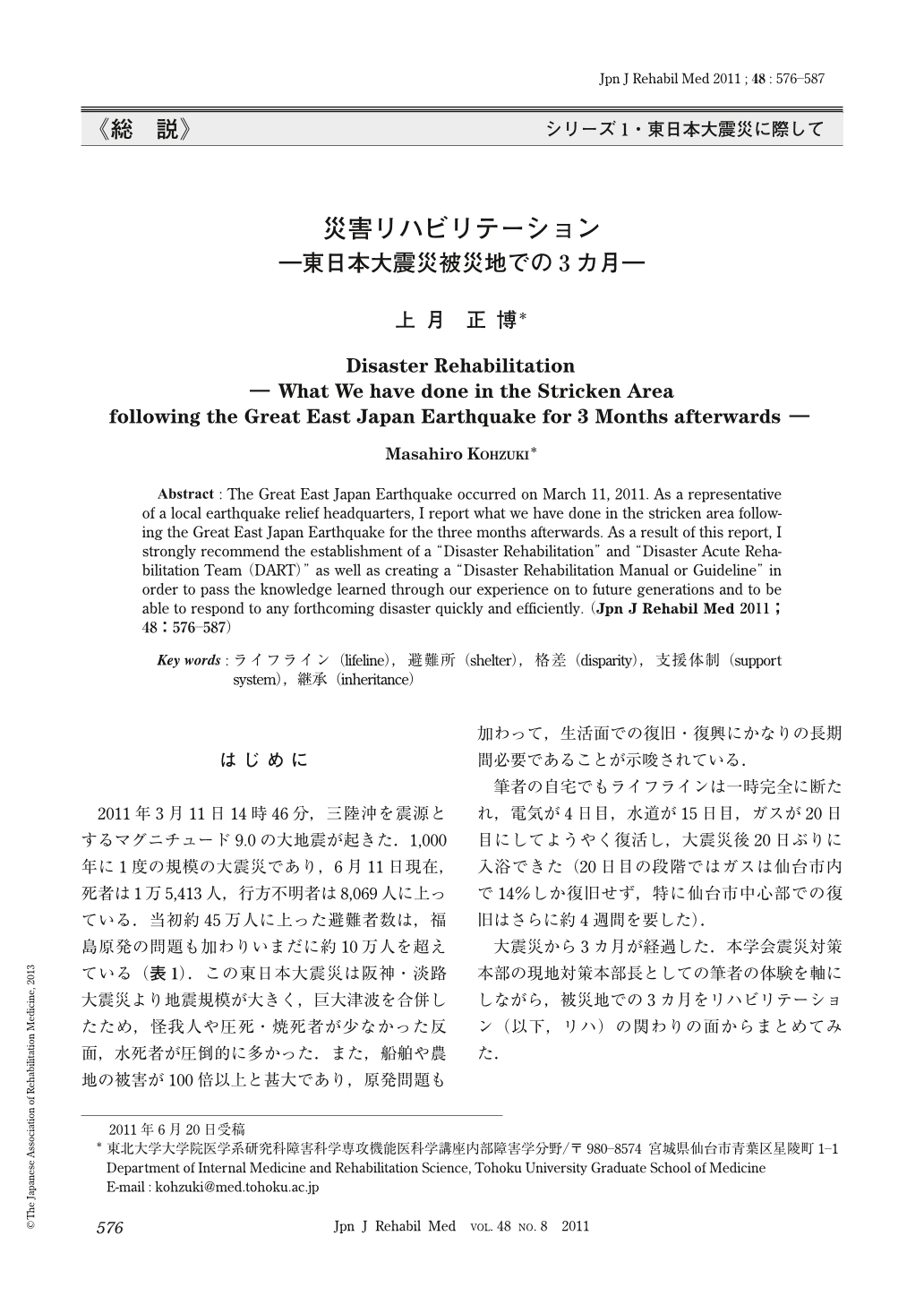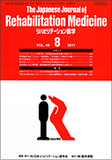Japanese
English
- 販売していません
- Abstract 文献概要
- 1ページ目 Look Inside
- 参考文献 Reference
はじめに 2011年3月11日14時46分,三陸沖を震源とするマグニチュード9.0の大地震が起きた.1,000年に1度の規模の大震災であり,6月11日現在,死者は1万5,413人,行方不明者は8,069人に上っている.当初約45万人に上った避難者数は,福島原発の問題も加わりいまだに約10万人を超えている(表1).この東日本大震災は阪神・淡路大震災より地震規模が大きく,巨大津波を合併したため,怪我人や圧死・焼死者が少なかった反面,水死者が圧倒的に多かった.また,船舶や農地の被害が100倍以上と甚大であり,原発問題も加わって,生活面での復旧・復興にかなりの長期間必要であることが示唆されている.
筆者の自宅でもライフラインは一時完全に断たれ,電気が4日目,水道が15日目,ガスが20日目にしてようやく復活し,大震災後20日ぶりに入浴できた(20日目の段階ではガスは仙台市内で14%しか復旧せず,特に仙台市中心部での復旧はさらに約4週間を要した).
大震災から3カ月が経過した.本学会震災対策本部の現地対策本部長としての筆者の体験を軸にしながら,被災地での3カ月をリハビリテーション(以下,リハ)の関わりの面からまとめてみた.
Abstract : The Great East Japan Earthquake occurred on March 11, 2011. As a representative of a local earthquake relief headquarters, I report what we have done in the stricken area following the Great East Japan Earthquake for the three months afterwards. As a result of this report, I strongly recommend the establishment of a “Disaster Rehabilitation” and “Disaster Acute Rehabilitation Team (DART)” as well as creating a “Disaster Rehabilitation Manual or Guideline” in order to pass the knowledge learned through our experience on to future generations and to be able to respond to any forthcoming disaster quickly and efficiently.

Copyright © 2011, The Japanese Association of Rehabilitation Medicine. All rights reserved.


